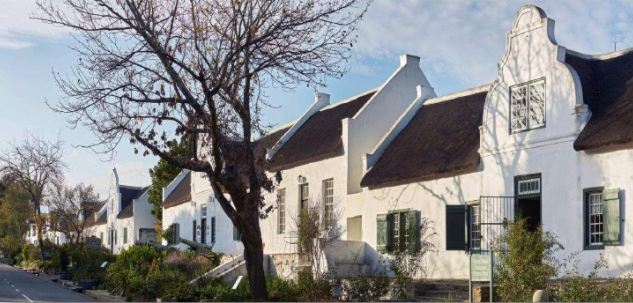
Jayson Augustyn-Clark's masters dissertation has been accepted by ‘academia’ and is now available for free and public download (click here). Jayson was born in Cape Town in 1973 and moved to Tulbagh in 2007 to establish a heritage hotel business in Church Street, suitably named Cape Dutch Quarters. Over the last decade he has volunteered, instigated and become deeply involved in local heritage matters. In 2008 he co-initiated the Tulbagh Valley Heritage Foundation which was registered as a local conservation body by Heritage Western Cape in 2013. As the current Chairman of the Foundation, he has worked towards the establishment of a heritage area to include both Church Street and the core of the old village. He is also a longstanding member of the town’s Oudekerk Museum board of trustees and the affiliated Friends of the Museum Association. He is also an executive committee member of the Heritage Association of South Africa.
Abstract
This dissertation examines heritage as a social construct by way of critically accessing the precursors, proponents and processes of the Tulbagh restoration. This research is focused on understanding thereasons why and how, after the earthquake of 1969, Church Street was reinstated to its ‘historic’ 18/19th century appearance. This reconstructive restoration is unpacked within its South African socio-political, 20th-century situation to examine the motivations of the proponents behind the restoration as well as their conservation philosophies that underpinned the stylistic reconstruction of Tulbagh back to what wasregarded as its Cape Dutch ‘best’.
The study comprises of an examination of both the theoretical development and practical application of reconstructions. Research traces the development of conservation in South Africa, first under the Union government and then under the Afrikaner Nationalist government to understand how Afrikaner Nationalism was superseded by the creation of a white South African identity. Pierre Nora’s theories around memory and identity are explored and applied in order to contextualise the Tulbagh case study in a theoretical framework to highlight similarities and differences.
The proponents of the Tulbagh restoration consisted of a wide and varied selection of the South African conservation fraternity and included the National Society, the Cape Institute of Architects, historian Dr Mary Cook, the Simon van der Stel Foundation, Anton Rupert and his Historic Homes Company, Gawie and Gwen Fagan and Dr Hans Fransen, as well as the National Monuments Commission/Council. These same role players came together in the decade before the earthquake to formalise their association, conservation resolve and philosophies. The findings of the study suggest that although united with a common vision, philosophy and determination, these conservation advocates all had their own agenda and differing motivations for their involvement in Tulbagh’s restoration. Motivations ranged from straightforward conservation concern and a response to the threat of cultural devastation on one hand to ideological nation-building ideals and Afrikaner nationalism on the other. Although politics impacted early on and all three levels of government funded the bulk of the restoration costs, the diversity of the proponents suggests that this project was more complex than being motivated primarily by nationalism.
Disclaimer: Any views expressed by individuals and organisations are their own and do not in any way represent the views of The Heritage Portal.
